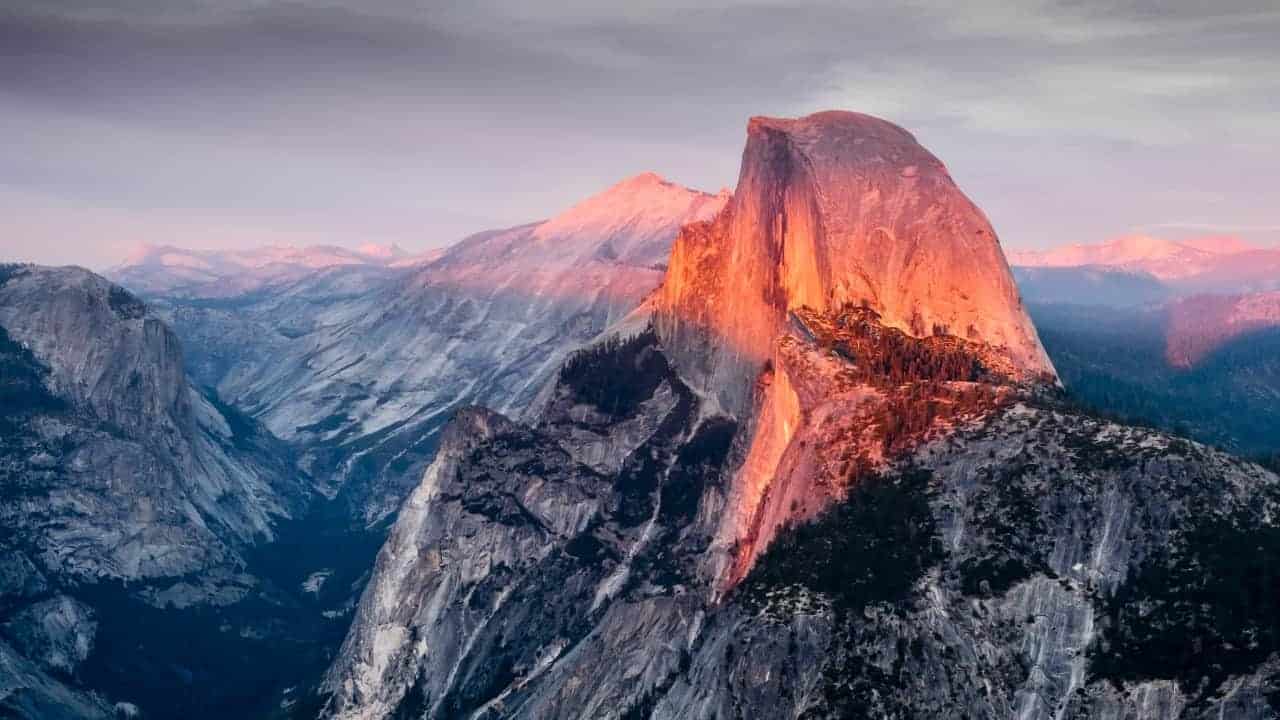You can summarize camping near Yosemite National Park in the words of one and only Yosemite Sam:
‘When I say Whoa, I mean WHOA!‘
Much like Sam’s mustache, the Yosemite area features unique bright red rock formations with an intense glow making you think the entire mountain is on fire.
In this guide, we’ll list some of the best dispersed camping spots near Yosemite National Park, talk about how to set up your tent in this area without disturbing its vast natural beauty while respecting the local authorities and regulations, and discuss ways to find the best dispersed camping spots in this area, the best season to get here, and some of the gear you might need.
Overview of Yosemite Dispersed Camping
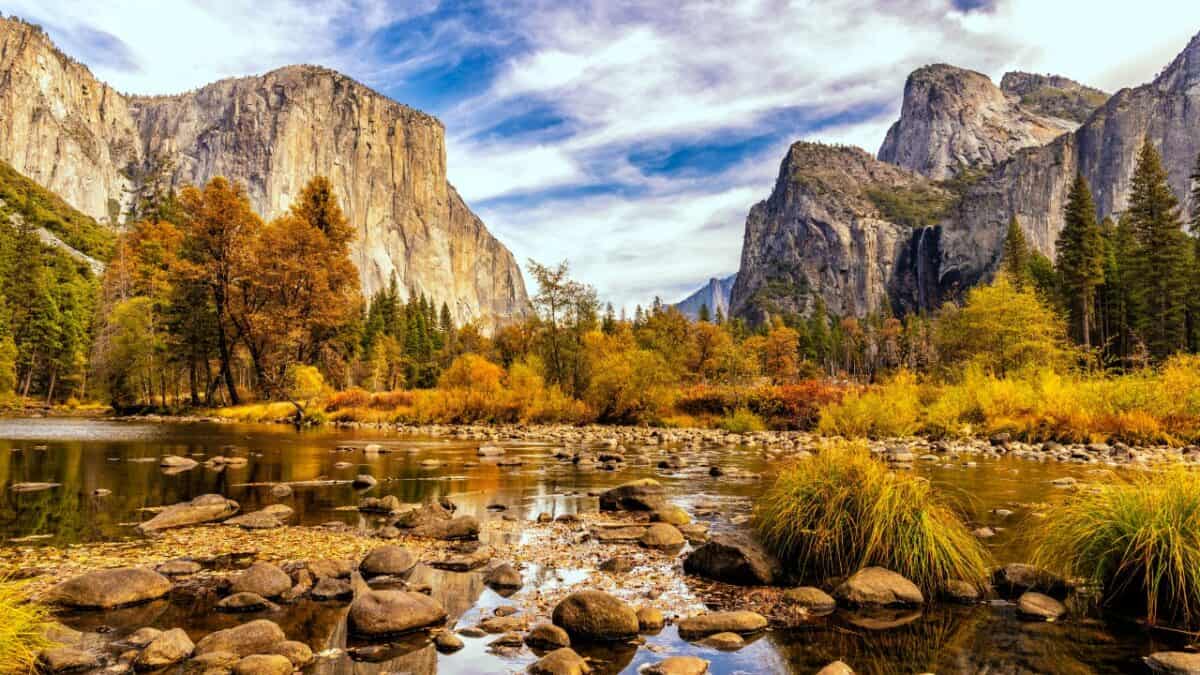
Home to forests of giant sequoias with individual trees reaching as far back as the past as 3,000 years, Yosemite National Park manages to look ancient and youthful at the same time.
When you have a National Park on your hands where one tree called Grizzly Giant can be the sole reason thousands of tourists flock to it yearly, you know that’s no ordinary nature preserve.
El Capitan and Half Dome represent two rock formations that ‘catch fire’ every time the sun sets in the Yosemite Mariposa valley.
At the bottom of the imposing granite captain, you will find a verdant gully that will undoubtedly take your breath away. On the other hand, some of the over 400 beautiful and curious animal species living in this area may also take your lunch away if you’re not careful.
While you won’t need to worry much about the Mountain Chickadee, the American Kestrel, or the small but energetic Red-Breasted Nuthatch, it’s wise to pay attention to the occasional black bear, especially the sneaky Sierra Nevada Red Fox.
Best Dispersed Camping Areas Near Yosemite National Park
Once you arrive in Yosemite National Park or an outside area, you’ll realize that even campsites far away from the actual park feature fantastic scenery with Nat Geo-worthy photo ops everywhere.
Whether you’re an RV camper looking to pitch your tent on a large clearing or are in it for the vicinity of the National Park – you’ll undoubtedly find something to your taste.
Evergreen Road Dispersed Camping
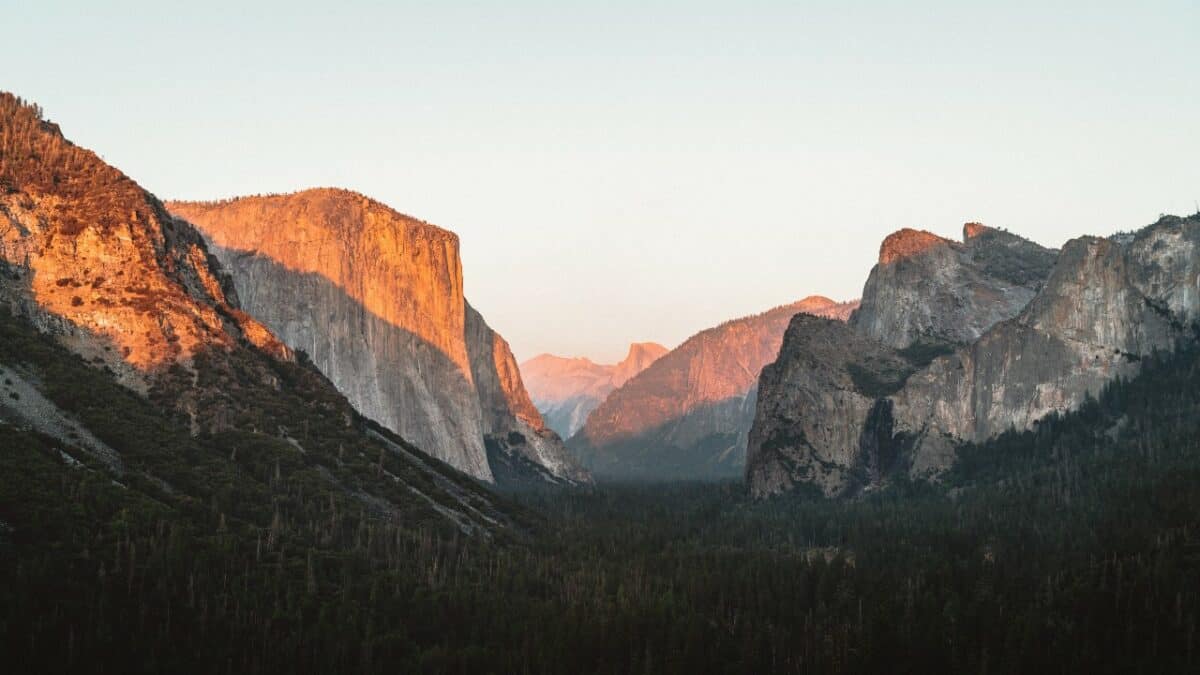
- Map
- Toilets: no
- Potable Water Availability: no
- Visitor Frequency: moderate
For those campers looking for a quiet, relaxed, and cozy camping experience during the summer months in Yosemite, Evergreen Road is where you might want to head.
Intersecting Highway 120 and representing an entrance to the National Forest, this road features a couple of pull outs along its way. For this reason, RV campers will probably find this route particularly attractive, as this road is almost entirely passable by some of the chunkier rigs.
One of the alternative camping spots that you can find in this area is following some of the less-developed winding trails off the main road. For these excursions, however, you will probably need a more robust vehicle – optimally, a 4×4 with a high clearing.
If you defeat the rough terrain en route to these smaller campsites, you will enjoy some extra privacy and some real forest camping.
In terms of amenities, you can count water and toilets out. Coming here means arriving well-prepared and fully stocked on supplies because you won’t find any at the campsites.
Summit Camping Area
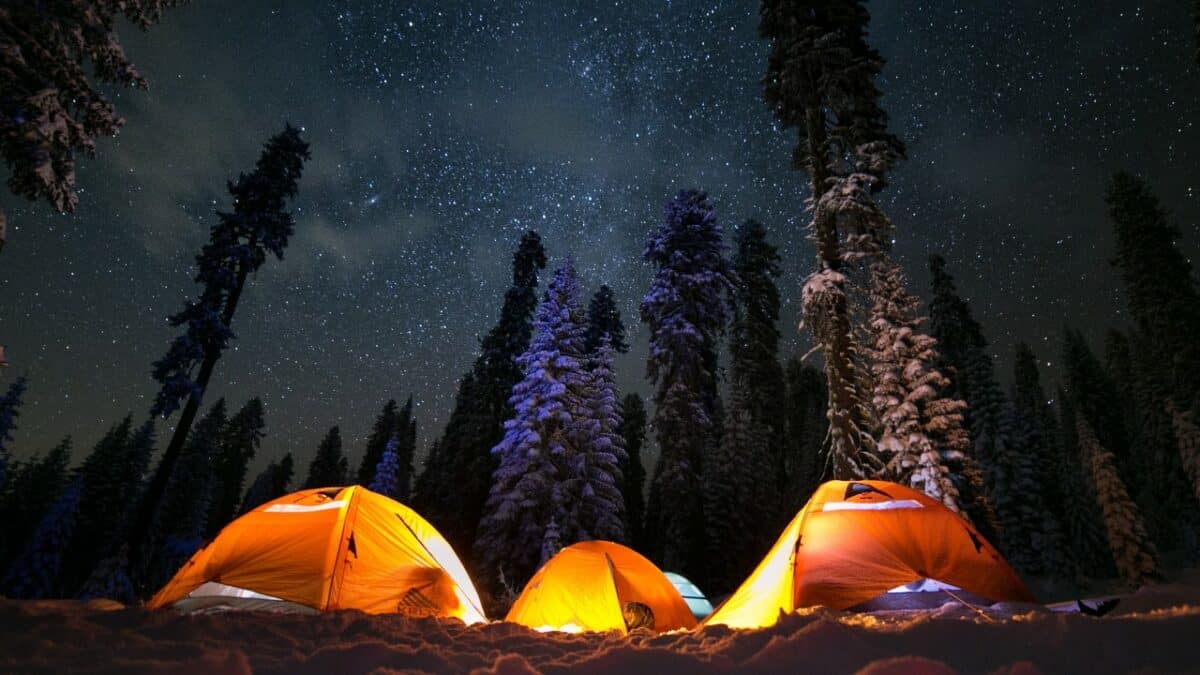
- Map
- Toilets: no
- Potable Water Availability: no
- Visitor Frequency: busy
Tucked snugly within the bounds of the Sierra National Forest and no more than eight and a half miles away from Yosemite, the Summit Camping Area represents a fantastic camping opportunity.
This area has it all for those looking to camp in a forest under regulations issued by the USFS and near a few fellow campers who are appreciative of the crisp forest air and a tranquil woodland setting. Except for water, toilets, and other amenities.
Since this campground is within a national forest, it’s essential to pay attention not to wander into a developed campground. Dispersed and developed campgrounds may look similar, but setting up a tent where you’re not supposed to can get you in a collision with the local forest authorities.
There are stories of regular people carriers making it all the way here regarding approachability and roads. These may as well be true, but to be on the safe side, coming here on a 4×4 is a better option.
Amenities here are non-existent, but what is alive and kickin’ is the nearby hamlet of Fish Camp. Here, you can replenish your supplies, take a tour of Yosemite, or rest at some of their charming rustic hotels.
Green Creek Road
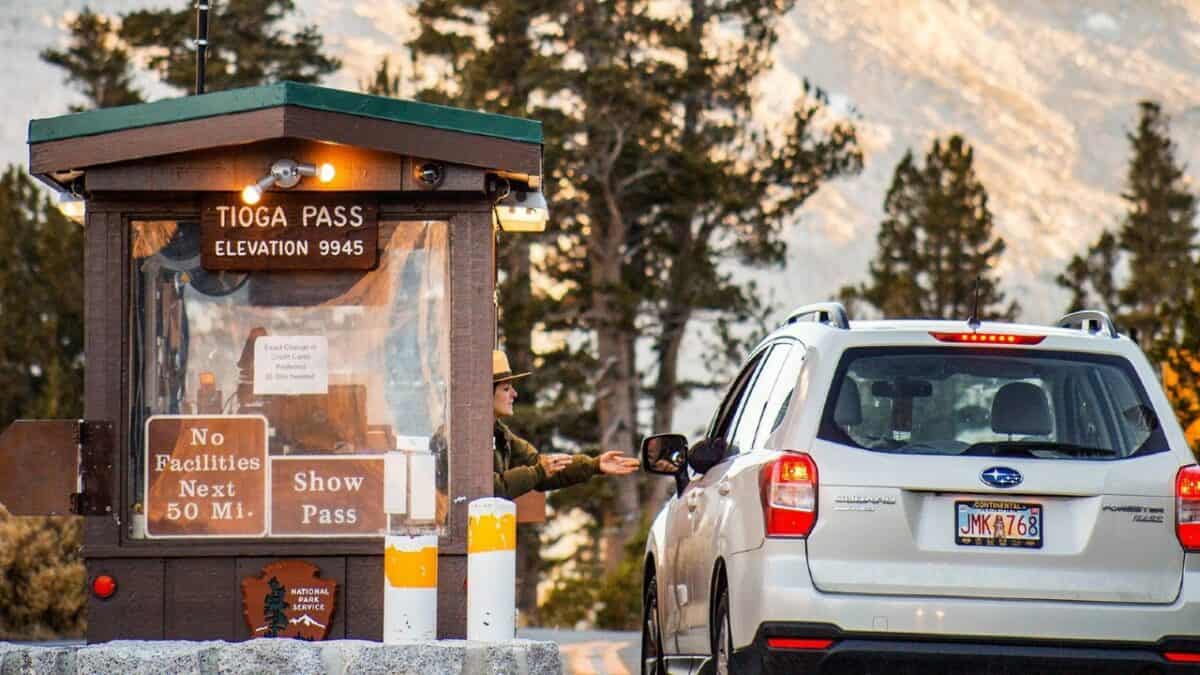
- Map
- Toilets: no
- Potable Water Availability: no (you can fetch some from the nearby creek, though)
- Visitor Frequency: moderate
If you’re a proud owner of a high-clearance vehicle and you’ve stocks of Diesel to export, having a pleasant drive some forty miles away from the Tioga Pass Entrance point will reward you with a dainty and secluded campground.
Green Creek road runs roughly parallel to Green Creek itself. Once you veer off the road and toward the creek, you will find the individual campsites arranged in a semi-circle.
The great thing about this area is the low visitor frequency. Due to its location and the distance from Yosemite, few campers venture here. This means a relatively private and secluded camping experience near water and with stunning Yosemite valley nature all around you.
The reason why I mentioned vehicles first off is mainly the distance, though. So, if you’ve been camping at a site near the entrance to Yosemite for a while and you need a break, visiting this little crescent-shaped series of campsites can give you some pleasant respite away from the hub of National Forest tours and events.
Travertine Hot Springs
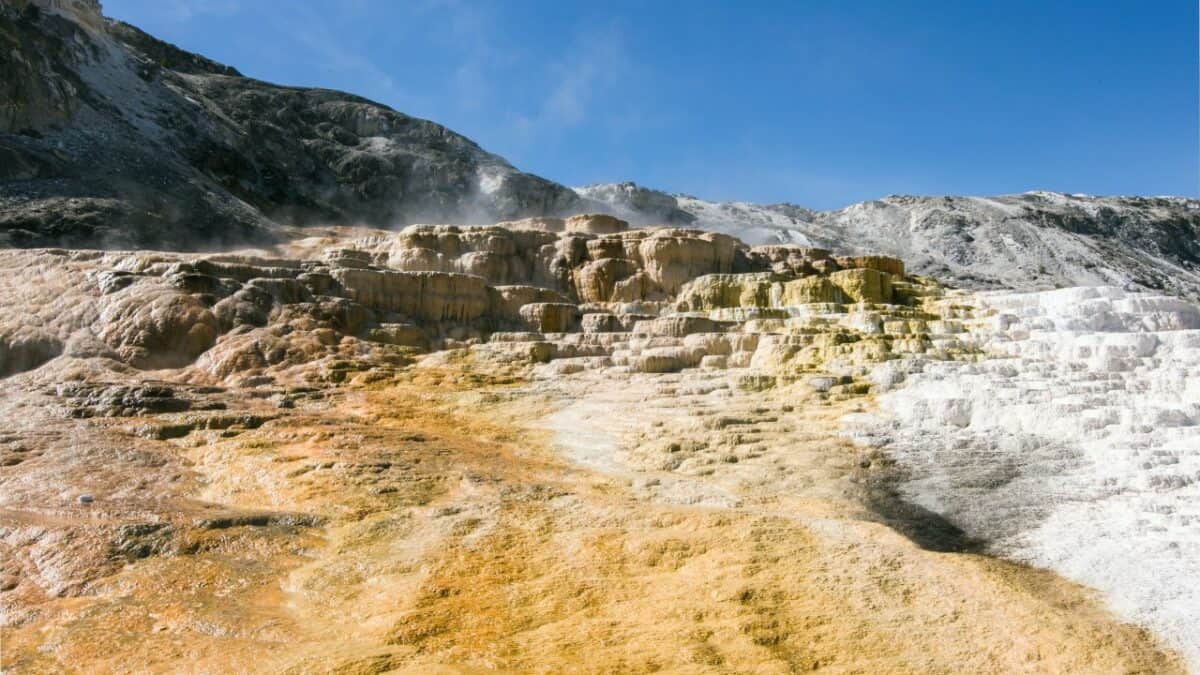
- Map
- Toilets: no
- Potable Water Availability: no
- Visitor Frequency: busy
If you’re looking to make a quick detour from Yosemite and visit the town of Bridgeport, there are some attractive dispersed camping solutions along the way.
The road that connects Bridgeport to the nearby Travertine Hot Springs (a tourist attraction in itself) is where you can pull out and park your RV to have a respite. Tenting here is also an option, but since this campsite is off the roadside type, so to speak – it’s perfect for RVs and vehicles.
It’s important to point out that camping at the hot springs parking lot is not permitted.
Travertine Hot Springs represent a series of small geothermal mineral springs interspersed throughout the location overlooking the High Sierra mountains.
You won’t find any amenities near this place, but you will find the town of Bridgeport, a populated hub of this area featuring rugged outback, verdant meadows, and scenic alpine lakes. And a bunch of supplies you can purchase in some of the local stores.
Mono Lake & Sagehen Meadows Campground
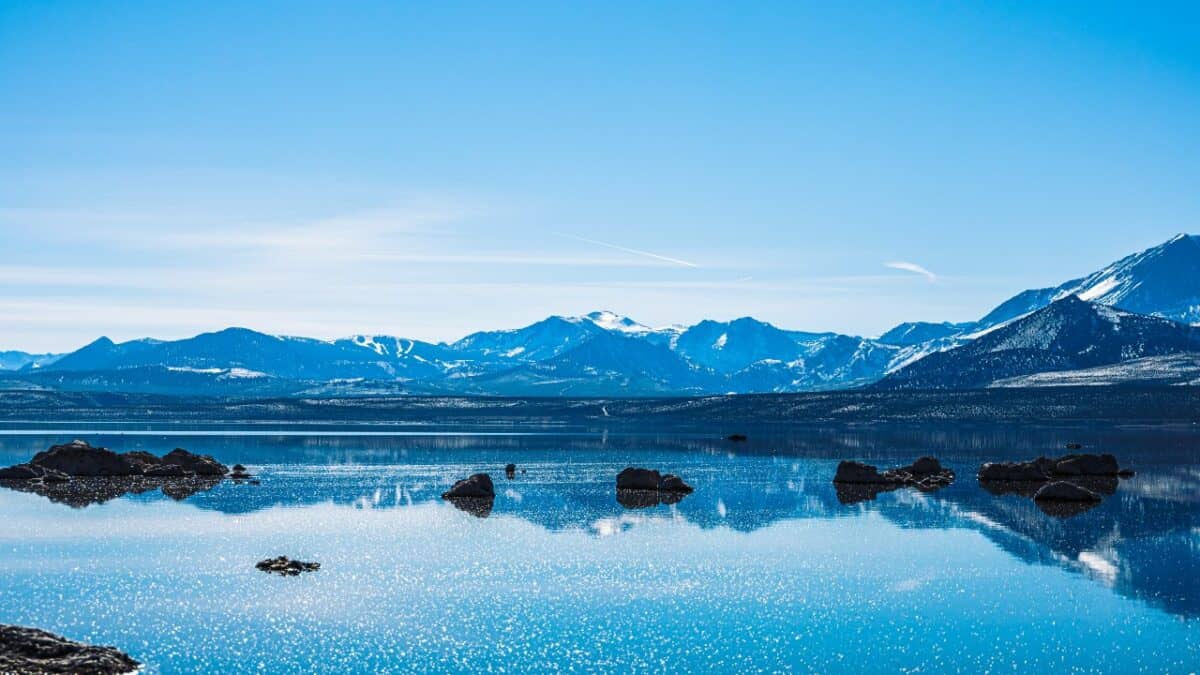
- Map
- Toilets: no
- Potable Water Availability: no
- Visitor Frequency: busy
About 20 miles from the Tioga Pass Entrance, you will find Mono Lake and several fantastic campgrounds.
Representing one of the oldest saline lakes in the Western Hemisphere, Mono Lake’s been attracting tourists, scientists, and campers for centuries. The first thing you will likely notice when you arrive at Mono lake is the strange and mesmerizing tufa towers. These limestone sediments formed slowly over thousands of years and stood tall as a testament to this area’s rich and turbulent geological history.
For dispersed camping, you will find a few fantastic options if you take a detour off Highway 120. The sites roughly follow the shape of the lake, so wherever you pitch your tent, you can rest assured you will get a fantastic view and photo ops of this magnificent area. Before you go there, you should be aware of some limitations regarding camping near the lake. You can read this online pamphlet issued by the USFS in detail about camping here.
Alternatively, you can continue past Mono Lakes to reach the Sagehen Meadows Campground. Here, you will find a campground that is entirely free to use, so this can be an exciting stop on your way to Yosemite or another destination in this area.
Hardin Flat Road
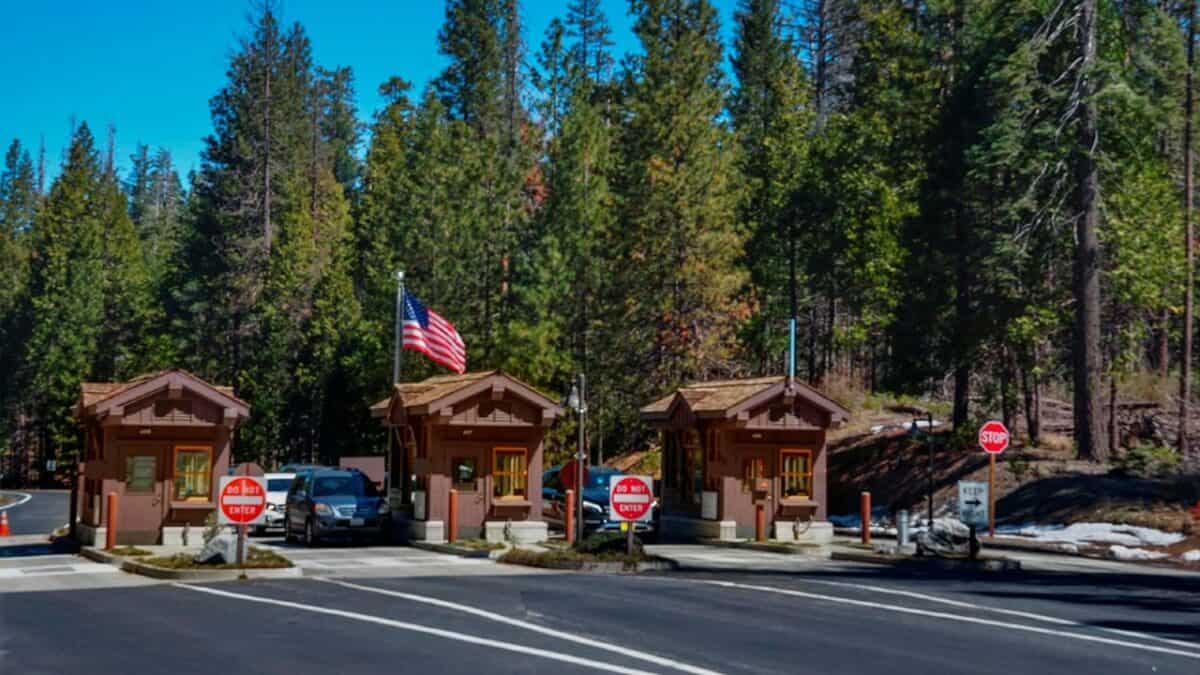
- Map
- Toilets: no
- Potable Water Availability: no
- Visitor Frequency: busy
Situated within walking distance from the Big Oak Entrance to Yosemite, Hardin Flat Road has been a campers’ favorite ever since this road was opened and connected to the national park.
One glance at its map is enough to show you why.
Hardin Flat Road is on the west side of the park and has many campsites you can check out. For this reason, finding excellent grounds won’t be a problem, even though this area is typically full of campers and tourists. (Especially during the peak summer season.)
Due to this dispersed camping area being a road, you will find several fantastic RV-friendly pullouts. The farther you go down this road, the bumpier the ride gets, so this road is perfect for RVs the whole way.
As far as services and amenities are concerned, you won’t find water or toilets here. That said, the proximity of civilization means restocking your supplies is a piece of cake.
Virginia Creek
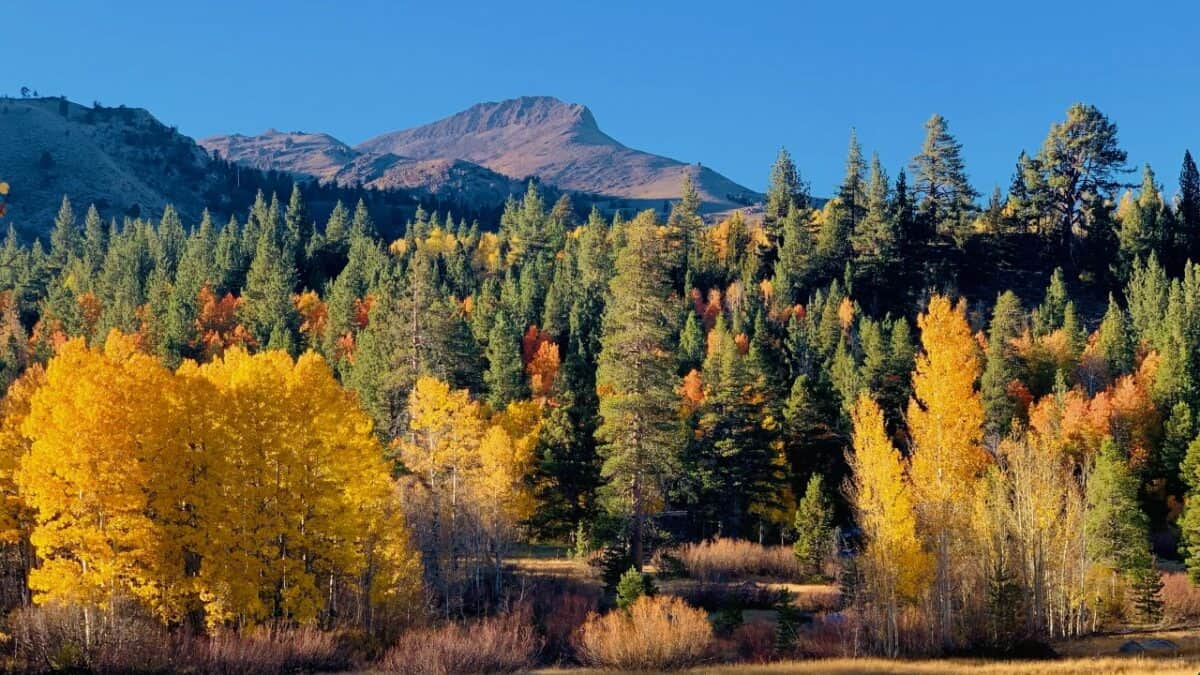
- Map
- Toilets: vault toilets
- Potable Water Availability: no
- Visitor Frequency: busy
Lastly, the Virginia Creek campgrounds represent a series of camping sites you will love to visit. I say ‘campgrounds’ because there are two camping areas here – Upper Virginia Creek with 15 campsites and Lower Virginia Creek with 22 sites.
Both of these areas fall under the jurisdiction of the Humboldt-Toiyabe National Forest and offer a range of fantastic dispersed camping opportunities. At both campgrounds, there are no camping fees included. There are no amenities other than vault toilets, which are a nice touch.
A USFS road connects the two campgrounds, and dispersed camping is standard in many pullouts on either side of this road, too. If you plan to veer off the road a bit, check out the USFS website to learn if the camping rules around this area have changed recently.
Regarding its vicinity to Yosemite, you’ll be some 30-ish miles from the Tioga entrance. So, supplies are not too far away, and you get to pitch your tent among the beautiful evergreen trees and breathe in the fresh woodland air every morning.
Also, despite this place being a massive forest, most campsites are approachable by vehicles. That said, arriving here on a Toyota 4×4 might still be the best course of motorized action. If you like camping in California, make sure to read out guide to dispersed camping near Kern River and our guide to free camping in Big Sur as well.
The Best Camping Season
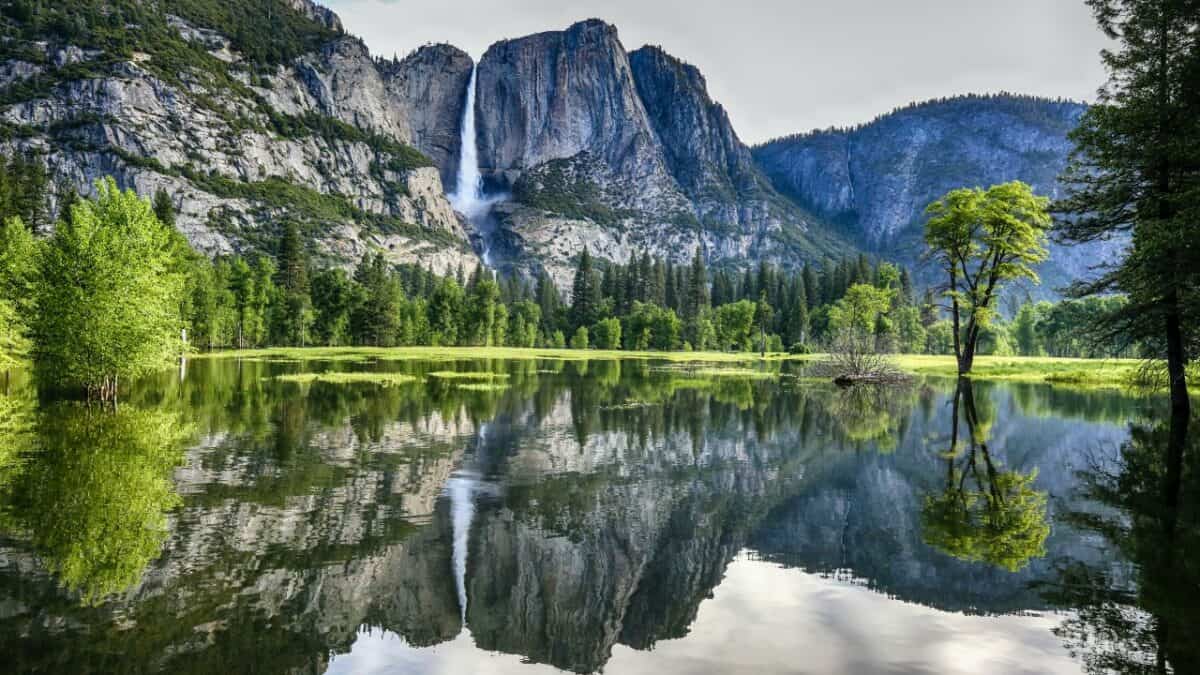
Varying in elevation from 2,000ft to 13,000ft, Yosemite National Park is where peaceful and smooth transitions from summer to fall of the foothills shifts to capricious storms that can hit the summits of rock formations like a ton of bricks out of nowhere come winter.
Where and when you pitch your tent or park your RV around these parts truly matters.
Optimally, if you’re looking for calm weather, warm succulent air, and breathtaking scenery with endless photo ops – you want to be there from May through September. July and August are the best in this sense. But many other people think so, too, so do expect more visitors during this time of the year.
Regarding winter camping in Yosemite, it’s entirely doable, but you will need to bring some cold-weather equipment. (Especially if you plan to set up a camp somewhere high up, where there aren’t any natural obstacles to biting winter winds and frequent and unpredictable snowstorms.)
Altogether, camping at an elevation around the Yosemite area might not be the best idea if you don’t have any cold-weather camping or hiking experience.
On the other hand, you can pitch a tent at a dispersed campground somewhere lower or on the foothill, making good use of a fire circle and roasting some marshmallows while enjoying the view of the nearby Yosemite Falls or the El Capitan. The other tall curiosity pieces in this area can be a fantastic way to get to know this beautiful Californian region.
You can learn about Yosemite’s versatile weather conditions at the official Yosemite National Park Seasons page.
If you love camping in the beautiful national parks of America, make sure to check out our guide to camping in Shenandoah National Park, Joshua Tree dispersed camping guide, and our guide to camping in Death Valley.
What to Bring to Your Camping Trip
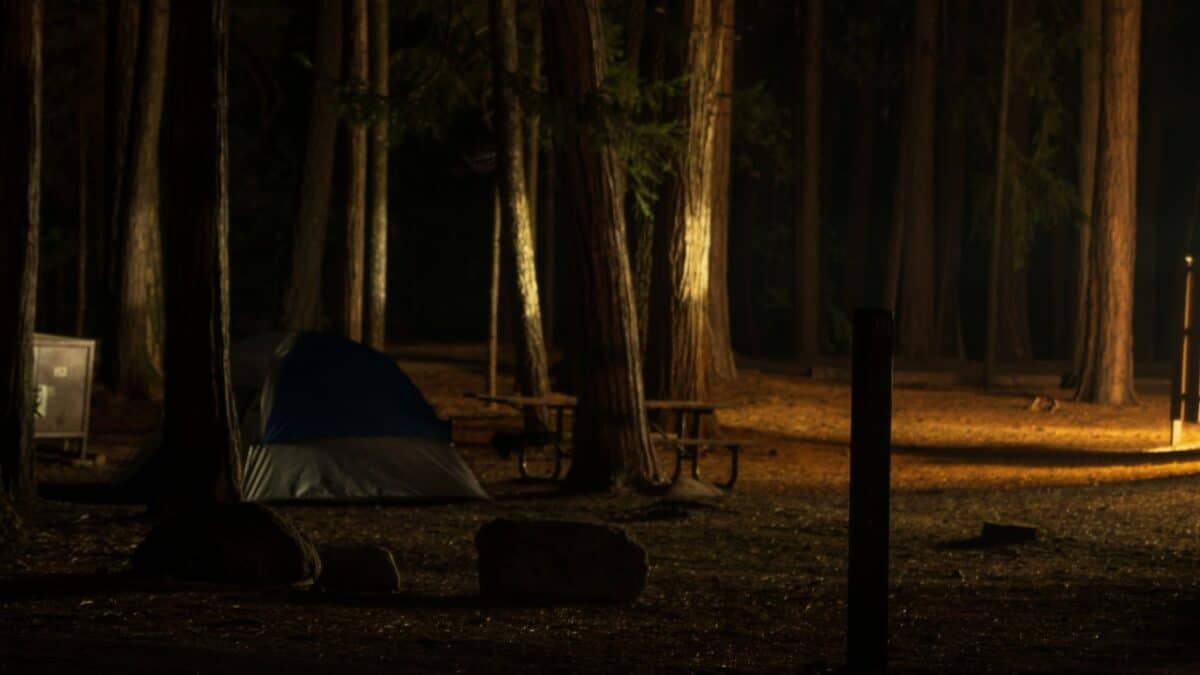
Whether you prefer cozy summertime camping, or some cold-weather getting-to-know-mother-nature type of business, dispersed camping at Yosemite, and dispersed camping in California in general, is unlike just regular camping.
Despite the vicinity of the majestic National Park and its many perks, the dispersed camping areas around Yosemite notably lack even the most rudimentary amenities, such as potable water and toilets.
For this reason, it is crucial to come here well-prepared and to respect the camping rules and regulations to a T.
Here are some crucial pieces of gear you may want to have on you when approaching this camping trip:
- Map – Digital or paper versions – the choice is yours. Though Yosemite is generally a high-frequency camping area (especially during the summer), it is also huge, so getting lost is a real prospect if you’re not careful. What matters is that you have a way of orienting yourself around this area.
There are many ways you can get a high-quality map of Yosemite valley. You can get some from vendors once you get there, but we recommend you check out some of the electronic versions prepared by Yosemite National Park officials.
- Portable water container – Hydration is essential for any camping trip, regardless of the season. While Yosemite is not without its water sources, no authority is willing to vouch for the quality of the spring or creek water. For this reason, bringing your canteens and flasks can be the best way.
- Camping stove – The Yosemite winter can be as biting and fierce as the Yosemite mule deer during the mating season. Bringing you some heating source, such as a camping stove, can keep the cold away and allow you to enjoy the surrounding nature rather than worry about frostbite.
- Bear spray – As mentioned above, Yosemite is a vast place where black bears roam free. Making sure to follow the maps and the instructions of the local rangers is therefore essential, but if you do get unlucky enough to chance upon one of these beautiful but dangerous creatures – a bear spray may save your life.
These entries represent the bare minimum for Yosemite camping. You can always spice up this list with solar chargers, specialized high-altitude pills, sleeping bags, radios, and other gadgetry according to your preference.
Wildfire Prevention
When it comes to fees for parking your RV or setting up your tent on a campground near Yosemite, the good news is – zero fees involved. As long as the campsite is not of a developed sort or not within the borders of the National Park proper, you can camp wherever you desire.
There is one primary consideration about camping in Yosemite, however. California’s witnessed some catastrophic wildfires in its history, so regulations surrounding campfires are some of the tightest in the US.
As a part of their ongoing effort to curb unnecessary and often devastating wildfires, Californians are willing to go out of their way to reach every potential visitor and inform them in detail about the current wildfire situation. You can visit the official website dedicated to wildfires and wildfires only to learn more about wildfire prevention and some pretty valuable pieces of info.
Once you’ve acquainted yourself with all the dos and don’ts around wildfires, you can pick up your campfire permit.
An important warning: You must NOT start campfires while camping if you do not have this permit!
Pets
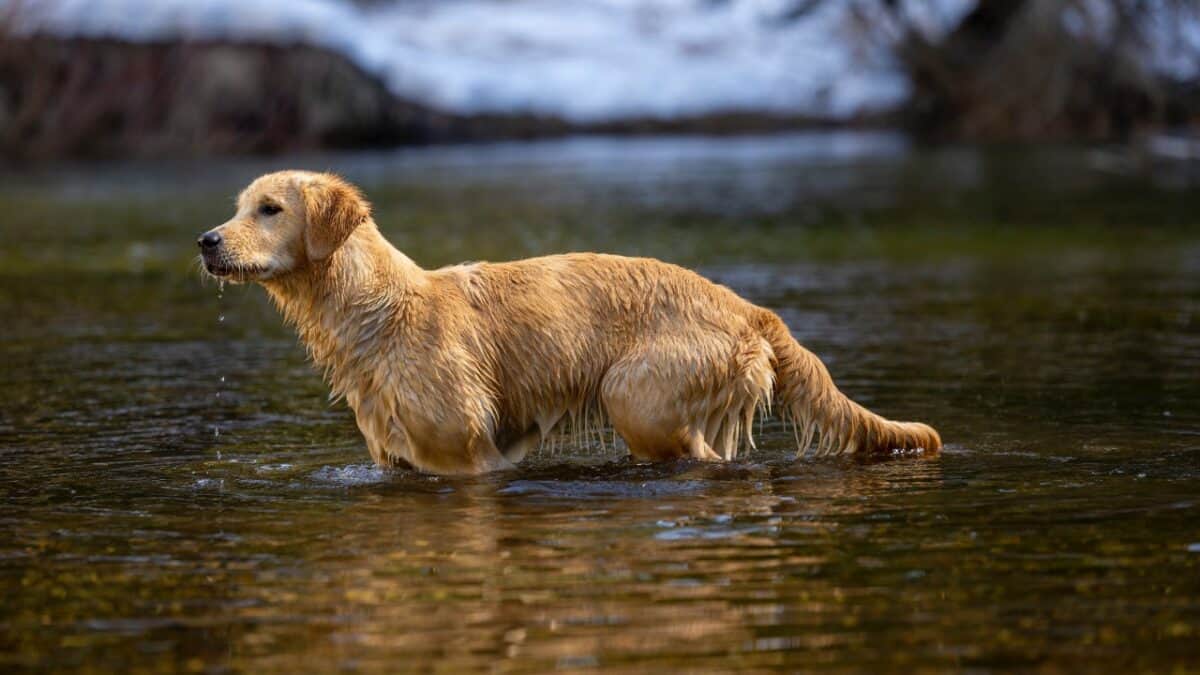
While it is possible to bring pets along with you on a Yosemite camping trip, it is advisable not to.
Pets are allowed on paved surfaces and any campground except for walk-in campgrounds and campsites for groups of people. You must keep your pet on a leash (no more than 6 feet long) and pet food, just like human food, must be carefully stored and kept away from the reach of animals.
The thing is, Yosemite is home to a large number of animal species, many of which are predatory and territorial. (Your pet’s tracks may attract predatory animals.) For this reason, you must always keep your pet on a leash and make sure not to enter buildings with your pet or walk on unplowed roads if it’s snowing.
There are many other regulations regarding bringing pets to Yosemite, and you can find out in detail about them here.
Conclusion
Maybe you’re into Yosemite valley’s tranquil streams and bird-watching in July from the comfort of your camping chair near your tent with a cooler full of ice-cold Budweiser. Maybe you’re into more of a private camping experience, such as the one just off Green Creek Road. Whatever your preferences, the area around Yosemite will not disappoint.
Then there’s fishing, kayaking, observing the oddities that are the Mono lake’s tufa towers, or dipping your toes in the Travertine hot springs and photographing the patch of the surrounding Sierra Nevada mountain range in its full glory.
Add to that rugged but immensely rewarding winter camping that requires some pluck, gear, and warm underpants, and you have a one-of-a-kind dispersed camping area to which you will keep coming back.

I love hiking, backpacking, and camping. From the Camino de Santiago to the West Highland Way in Scotland or simply a great day hike on the weekend. Hiking refreshes me, my mind, and keeps my body reasonably fit. So far I have walked three Camino routes and many other long distance hikes in the UK, Canada, and around the rest of Europe. One of the best was my hike up Ben Nevis.

